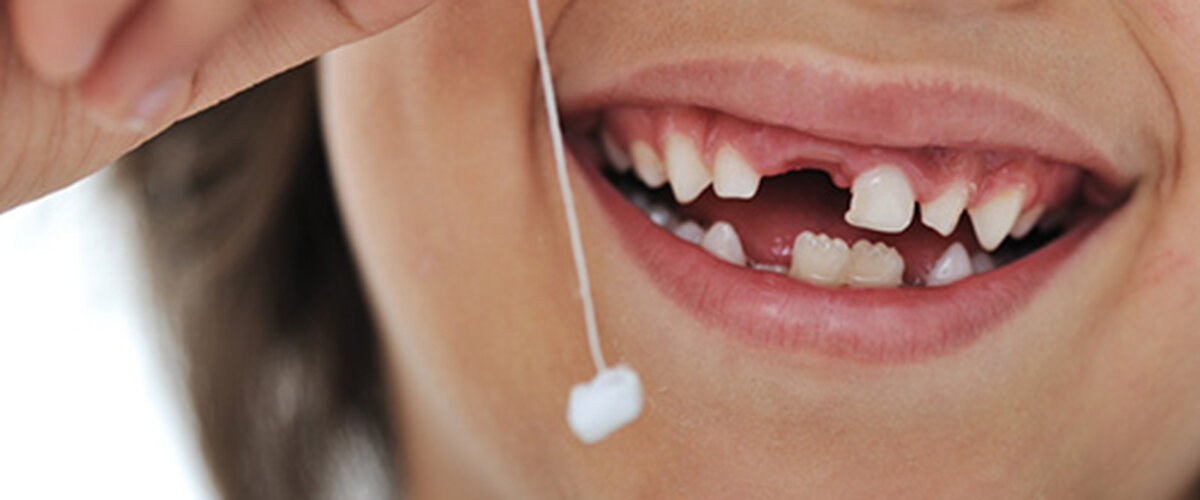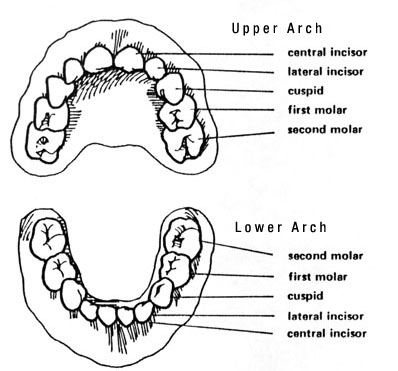At What Age Do Baby Teeth Normally Fall Out?
Many parents worry that their children’s teeth are not falling out on time. At what age should the first baby tooth be lost? When should the last one fall out? Is there a predictable order?
Primary teeth come in between 6 months and 3 years The first baby teeth (also known as primary teeth) to come in are usually the lower central incisors around the age of six months. The last baby teeth to show up are the upper second primary molars, and they appear between 30 and 36 months of age. There are normally 20 baby teeth by the time a child reaches age 3. These primary teeth then remain unchanged for about three years.
First 8 primary teeth lost between ages 6 and 8
Not much happens to the baby teeth between 3 and 6 years of age. Between 6 and 8 years however, there is a flurry of activity as kids normally lose eight primary teeth in rapid succession.
Last 12 primary teeth lost between 10 and 12
Between age 8 and age 10 there is another two-year pause that catches many parents by surprise since they have become accustomed to teeth being lost one after the other. The last twelve primary teeth are then lost between ages 10 and 13. The following chart summarizes primary tooth loss:
Primary tooth loss summary by age
Ages 3-6: Not much happens Ages 6-8: First eight baby teeth lost Ages 8-10: Not much happens Ages 10-13: Last twelve baby teeth lost
Sequence of primary tooth loss from 6 to 8
Although there are always exceptions, there is a basic sequence for the loss of the baby teeth. The upper and lower front four teeth are usually lost between the ages of 6 and 8. This typically begins around age 6 with the lower central incisors followed by the upper central incisors. The upper and lower lateral incisors then come in between 7 and 8. So by age 8, children should have all eight of their permanent incisors in place.
Sequence of primary tooth loss between 10 and 12
After a two-year break (about age 10), the next four baby teeth to be lost are the lower canines and upper first molars. These are typically followed around age 11 by the lower first molars. The lower second molars tend to be lost about the same time as the upper canines and second molars. This usually happens in the 12th year. In summary, here is the order in which baby teeth are normally lost:
Primary tooth loss summary by sequence
Age 6: Lower and upper central incisors Age 7: Lower and upper lateral incisors Age 10: Lower canines and upper first molars Age 11: Lower first molars Age 12: Upper and lower second molars and upper canines
Some variation is normal
These are merely averages however. Some kids lose teeth faster than this. Others lose them slower. It is not unusual to see a 10-year-old with no baby teeth remaining, nor is it surprising to see a 14-year-old still hanging on to a few. The actual ages are not as important as the pattern.
Deviations from these patterns may indicate a problem
If baby teeth are not lost in the right order, or if a tooth is lost and more than three months go by without a permanent replacement coming in, there may a problem. Some possibilities include missing teeth, crowding, problems with the tooth loss mechanism, or the underlying tooth is just crooked and it is not pushing out the one above it. These are all conditions that your orthodontist will look for during your child’s orthodontic evaluation. Your doctor can tell you if everything is normal or if interceptive procedures are warranted (i.e. having your dentist help move things along by removing some primary teeth). Set up an orthodontic appointment for your child around age 7 so that you can benefit from the expertise of a doctor who specializes in dental growth and development. Even if there is nothing wrong, it is always a comfort having that peace of mind.
NOTE: The author, Dr. Greg Jorgensen, is a board-certified orthodontist who is in the private practice of orthodontics in Rio Rancho, New Mexico (a suburb on the westside of Albuquerque). He was trained at BYU, Washington University in St. Louis, and the University of Iowa in the United States. Dr. Jorgensen’s 25 years of specialty practice and 10,000 finished cases qualify him an expert in two-phase treatment, extraction and non-extraction therapy, functional orthodontics, clear aligners (Invisalign), and multiple bracket systems (including conventional braces, Damon and other self-ligating brackets, Suresmile, and lingual braces). This blog for informational purposes only and is designed to help consumers understand currently accepted orthodontic concepts. It is not a venue for debating alternative treatment theories. Dr. Jorgensen is licensed to diagnose and treat patients only in the state of New Mexico. He cannot diagnose cases described in comments nor can he select treatment plans for readers. Because he has over 25,000 readers each month, it is impossible for him respond to all questions. Please read all of the comments associated with each article as most of the questions he receives each week have been asked and answered previously. The opinions expressed here are protected by copyright laws and can only be used with written permission from the author.


